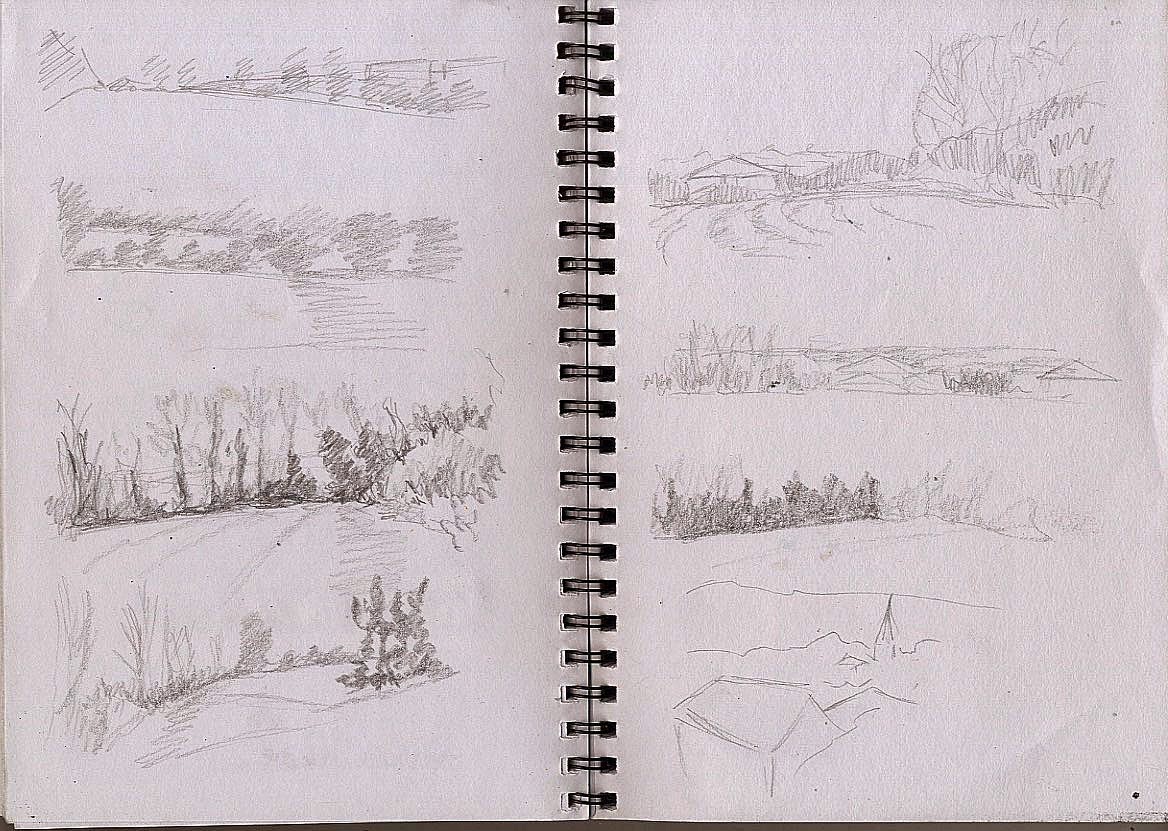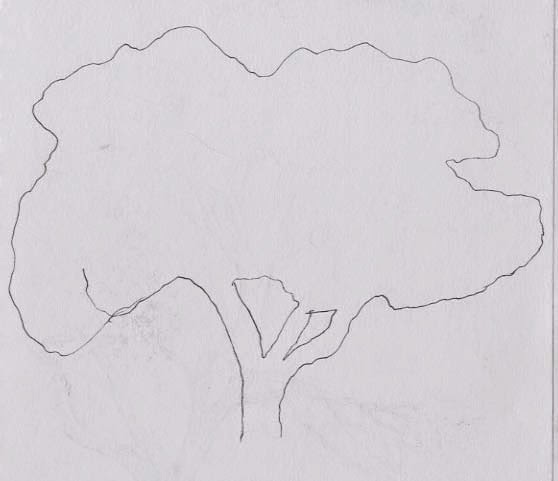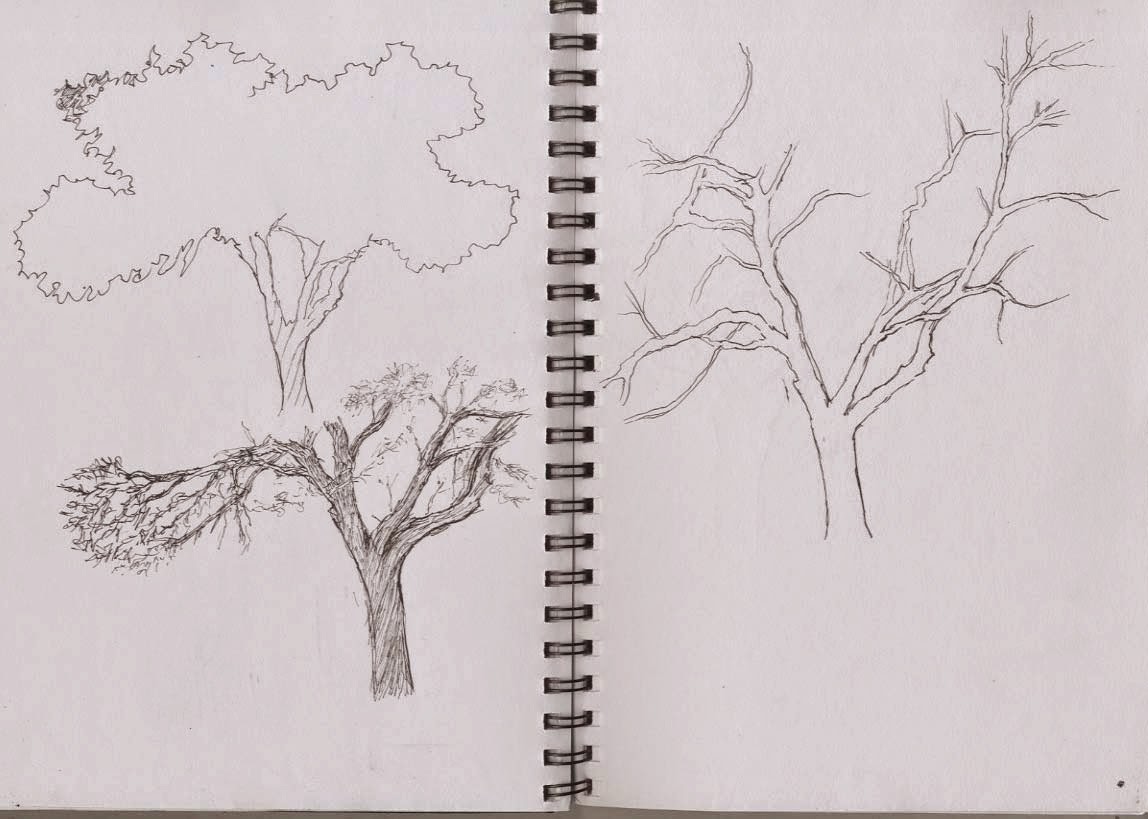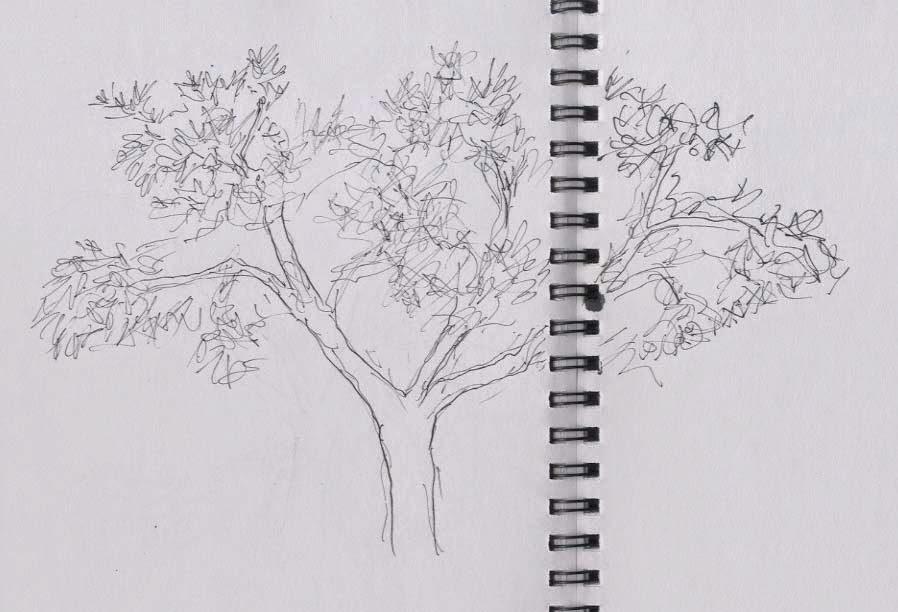The choice for this assignment is still life, an animal study or an interior scene. Initially I was tempted by still life as I have a hyacinth which is flowering beautifully,
 |
| Coloured ink and dip pen, felt tip and water |
but I wasn't sure which way I wanted to take it and I thought of trying to combine an animal study in an interior scene.
This corner is Henry's favourite interior scene so I'm sure to find him here but it's a bit dull.
The brief also asks to experiment with idea material and method. I don't usually use conte and charcoal to draw animals from life and I would like to further explore the idea of doing an animal study in the style of a life drawing. These are studies in my sketchbooks, the ones above are charcoal and conte, the ones below are fineliner and pencil where I was exploring his anatomy.
I like working on a medium tone coloured ground adding lights and darks to show form, but I have never done this with live animal studies so I bought some coloured sugar paper.
Not sure about these so I went back to my sketchbook and pencil
Then back to the sugar paper
These three studies were done on a A2 sized sheet so individually they are quite small.
This is A1. I'm pleased with it in that it's done from life using sweeping side strokes with the conte stick in a style I might use in a life session and it captures the way that Henry (who is rather neurotic) was worried that I had a large board erected in the room and I was studying him. However it's not a very exciting drawing if you don't know Henry or like dogs very much. I didn't put the background in either as I thought it would be a bit distracting. I know it's best to draw animal and background together but I knew I was time limited as he would not hold that position for very long and my memory is limited so I needed to get as much detail as possible down while he held the pose. In fact he did move his head quite a lot so I had to grab details as I went along.
With this in mind I decided I needed a more interesting pose and did some more sketchbook studies
I think the curled up position is more interesting even though it's less dynamic so working from my studies I did another conte drawing on sugar paper trying to use the techniques I used for these earlier studies.
There is an irritating kink in the paper which was there when I bought it. I wanted this colour and there were only 2 sheets left both with the kink, I'm hoping it will iron out if I put something heavy on it. Henry alone was still a bit dull so I added a cat to add some tension. I don't think this picture could take any background but I'm troubled by the general lack of background in all these pictures so I went back to this earlier picture
He could be unsettled because he is waiting for his owner to return in which case he could be sitting outside the front door.
I wanted to try a different approach where I laid down a charcoal background and drew into it with a rubber.
I loosely drew a bookcase and pillow but found it difficult to get good whites with the rubber so I added some white conte which didn't show up very well.
Some more work with the rubber and a little brown conte
Is this any better? I think it needs a bit more colour so I added some blue pastel.
I find drawing relatively easy, what is difficult is using it to create an interesting composition and I'm not sure I've achieved that here. For all three drawings I used a limited colour pallet to give some consistency. I think charcoal, conte and pastel are good mediums to capture animals, the softness gives the feel of fur without drawing every hair.
This picture has the best contrast in tone
This probably uses the widest variety of lines and has a more interesting context than the other two, but the dog in front of the bookcase may be a better composition. They are all accurate depictions of form but that may not be a positive feature, I tend to slavishly follow form and could do with being a bit less accurate at times. I have tried to be experimental in my approach to the picture making with techniques I wouldn't usually try







































































